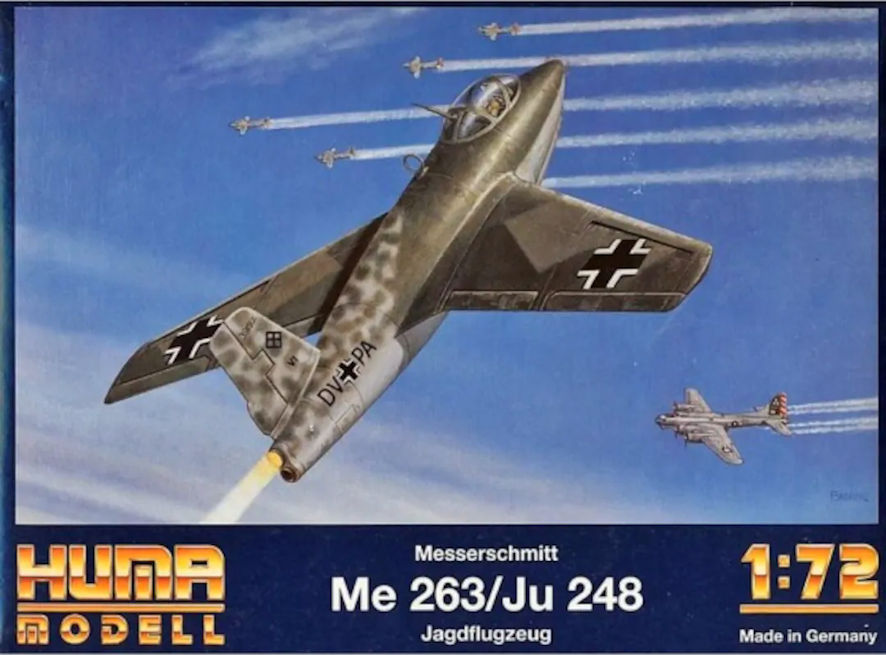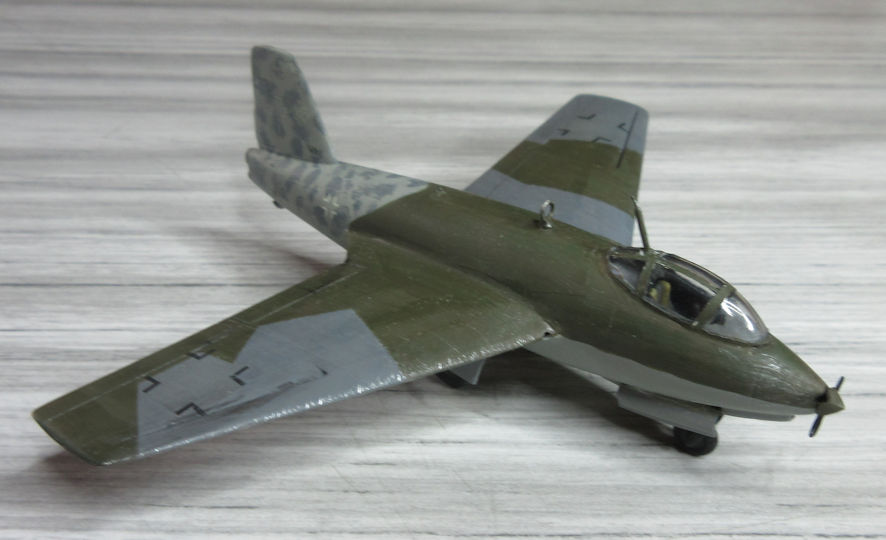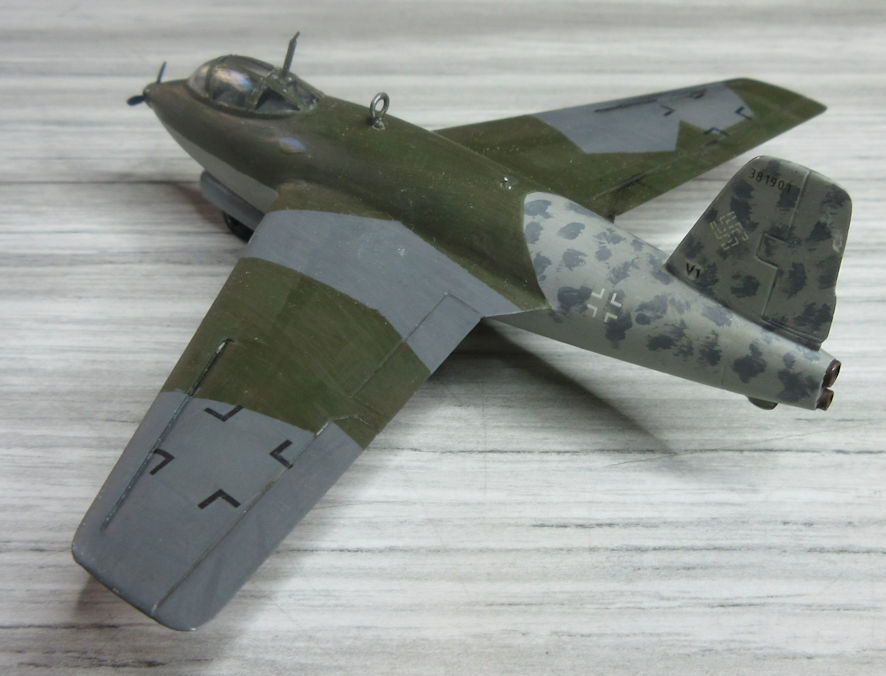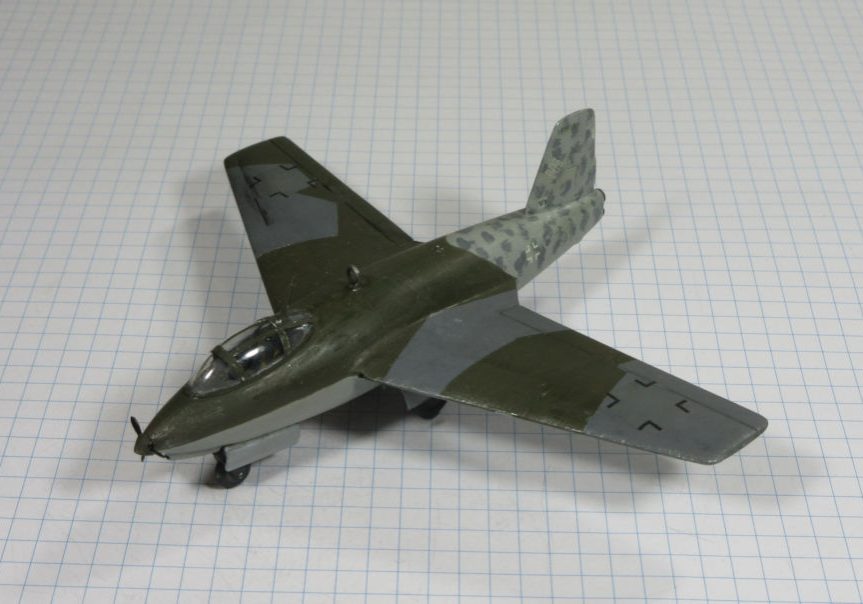Even before the Messerchmitt Me163B entered service it had become apparent it had many problems that made it very difficult to use operationally. Two of the most important were its very short endurance which gave it a maximum of only two and a half minutes in which to engage enemy bombers after climbing to intercept them and the hazards of taking off and landing. During taking off the little trolley the Me163B used could bounce up and hit it while hard landings on its skid caused many fatal accidents and injuries. One solution to the problem of endurance came in the form of a refined rocket motor, the Walther 509C, which could cruise at lower power to reduce fuel consumption. This motor was first tested in the Me163V-6 in the summer of 1944 and a refined version of the Me163B, the Me163C, was designed to use it. Only a few Me163Cs were completed before the end of the war.
In early 1944 Messerchmitt began work on an improved version of the Me163C with the same Walther 509C motor but a bigger airframe to accommodate larger tanks and retractable, wheeled undercarriage to over come the problems experienced by the Me163B. The wings and tail of the Me163B were retained to speed up production while the new, larger fuselage also included a pressurised, all-round vision canopy.
The new interceptor had an endurance of up to 13 minutes in comparison to eight for the Me163B. Initially the new version was called the Me163D but the project was transferred to Junkers where it was redesignated the Ju248. The first prototype was completed in August 1944 and several unpowered test flights were made with the undercarriage fixed down. By this time it had been redesignated the Me263 and the only prototype to be constructed was handed back to Messerchmitt which undertook powered flight trials. Preparations for production of the Me263A were being made at the time Germany collapsed in 1945. The sole prototype was captured and taken to Russia where it may have been an influence on later rocket fighter design there.

Huma began producing what we would now call ‘limited-run’ kits in the mid 1980s, concentrating on a range of previously unavailable German types. In general their kits are of a very high standard, well designed and generally accurate. If anything, they are sometimes a little more complex than is necessary in 1/72 scale. These days Huma package their kits in attractive boxes with good paintings on the front, when I acquired this kit they simply stuffed them into plastic bags, working on the possibly correct assumption that the real connoisseurs knew what they were looking at so a flash box wasn’t worth the cost.
I made this kit in 1989 so I don’t recall all the fine details of the effort that went into constructing it properly. I do, however, recall with painful clarity the trouble the undercarriage gave me. The kit is very detailed in many ways, for example the cockpit comes with as much detail as you are likely to require for a kit of this size and the undercarriage is too complex for mere mortals. No doubt it is accurate in the way it presents everything but it comprises so many little fiddly parts that it is murder to get together and, unless you get everything lined up with absolute precision, the narrow track means it is almost impossible for the model to sit squarely on the ground when it is completed. The kit includes two sets of undercarriage doors, for the Ju248 which flew with undercarriage down and full doors for the later Me263V.
Coming back to the kit after a decade I am a little impressed by the skills I displayed back then and puzzled at some of the things I did. For example, I was seriously into weathering in those days with the result that an aeroplane that probably existed for no more than a year and was very carefully maintained appears to have accumulated a fair amount of gunge. Back then I must have assumed the Me263 had the same pitot tube as the Me163B, even though it wasn’t in the Huma kit, so I scratch built one for it then and now had to cut it off. The model had an unrealistic nose-down sit so I broke and rest the nose wheel to make it look better.
The most confusing thing is that the instructions clearly say the model should be painted in standard RLM 74/75/76 colours (though these days we are inclined to believe it would have been RLM 76/81/82) but I painted the upper colours grey and green with the underside in light grey. What I was thinking? Did I know something that I’ve now forgotten or did I simply not read the instructions properly. I decided it was best to leave well enough alone and not repaint the model. After a little bit of tidying up and cleaning the model still looks pretty good.


Leigh Edmonds
October 2001
